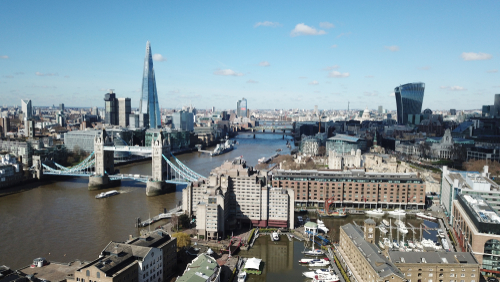New laws are being introduced today in the UK which will restrict all drones from flying above 400 feet and within 1 kilometre of airport boundaries.
According to the UK Department of Transport: “Following a year-on-year increase in the report of drone incidents with aircraft – with 93 in 2017 – these measures will reduce the possibility of damage to windows and engines of planes and helicopters. The changes will come into effect on 30 July 2018. The new laws will also require owners of drones weighing 250 grams or more to register with the Civil Aviation Authority (CAA) and for drone pilots to take an online safety test to ensure the UK’s skies are safe from irresponsible flyers. These requirements will come into force on 30 November 2019.”
The CAA and airports will have the power to make exceptions to these restrictions in specific circumstances.
Baroness Sugg, Aviation Minister, said:
“We are seeing fast growth in the numbers of drones being used, both commercially and for fun. Whilst we want this industry to innovate and grow, we need to protect planes, helicopters and their passengers from the increasing numbers of drones in our skies. These new laws will help ensure drones are used safely and responsibly.
In addition to these measures a draft Drones Bill will be published this summer, which will give police more tailored powers to intervene on the spot if drones are being used inappropriately. Drone operators will also eventually be required to use apps – so they can access the information needed to make sure any planned flight can be made safely and legally. For model aircraft flying associations who have a long-standing safety culture, work is underway with the CAA to make sure drone regulations do not impact their activity.
The new laws are being made via an amendment to the Air Navigation Order 2016.
Drone users who flout the new height and airport boundary restrictions could be charged with recklessly or negligently acting in a manner likely to endanger an aircraft or any person in an aircraft. This could result in an unlimited fine, up to five years in prison, or both. Users who fail to register or sit the competency tests could face fines of up to £1,000.
There has been a significant increase in the number of commercial permissions issued by the CAA in the last year. The number of active commercial licences increased from 2,500 to 3,800 in 2017, a year on year growth of 52%. There has been a year on year increase in drone incidents with 71 in 2016 rising to 93 in 2017.
A recently released PwC report highlighted that the uptake of drones could be worth up to UKP41.7 billion to the UK GDP by 2030. The use of drone to deliver parcels significantly reduces costs, research by Deutsche Bank showed that drones cost less than USD0.05 per mile to deliver a parcel the size of a shoe box, compared to delivery costs of up to USD6.50 for premium ground services




